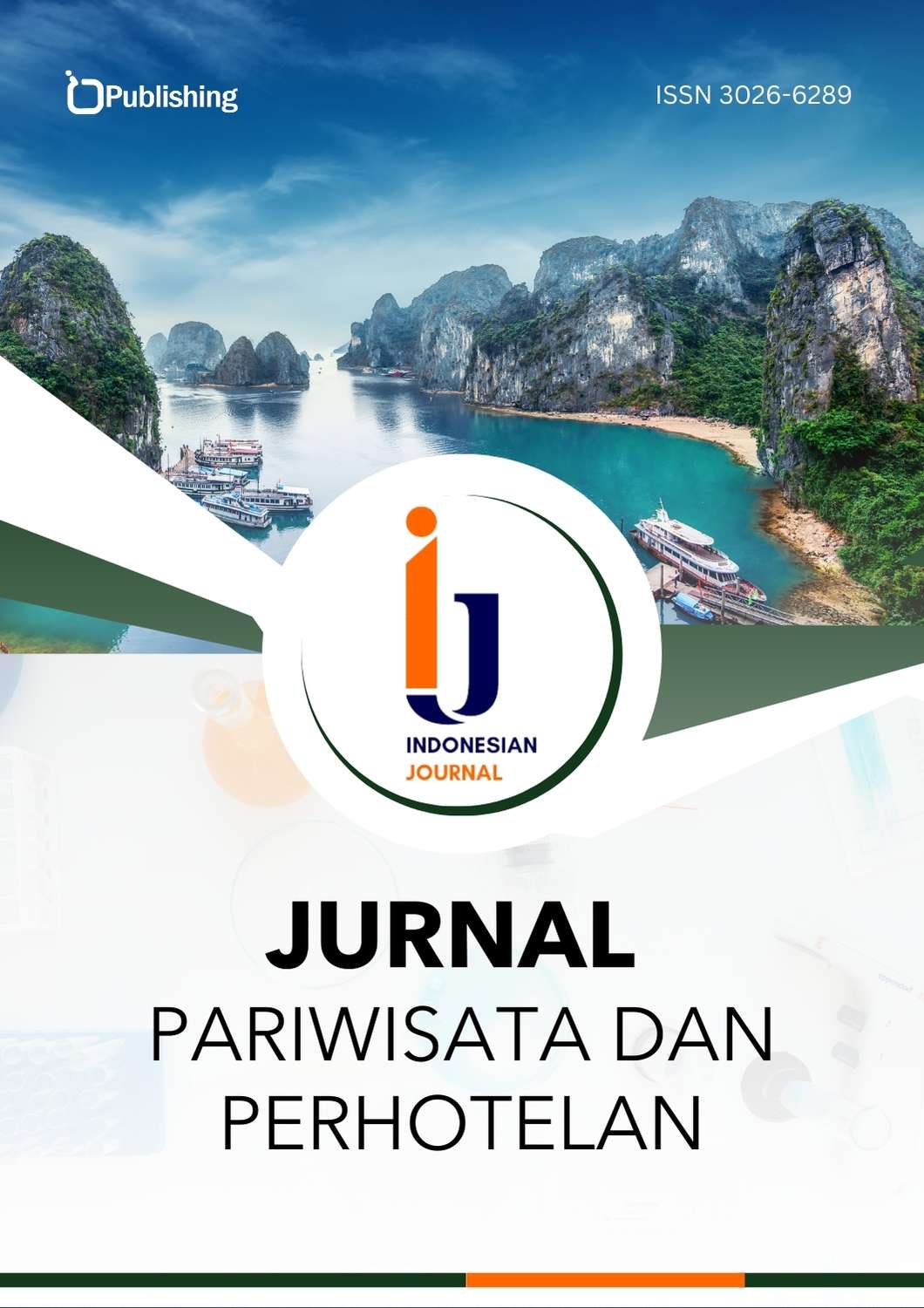Analysis of 3A Theory in Making Coban Pelangi Waterfall A Natural Tourism Attraction in Gubugklakah
DOI:
https://doi.org/10.47134/pjpp.v2i2.3519Keywords:
Coban Pelangi Waterfall, Tourist Attractions, Natural Tourist Attraction, 3A TheoryAbstract
This study examines the implementation of the 3A theory (Attractions, Accessibility, and Amenities) in the development of Coban Pelangi Waterfall as a natural tourism attraction in Gubugklakah, East Java, Indonesia. The waterfall’s natural beauty, highlighted by its unique rainbow phenomenon, is the primary attraction, drawing both domestic and international visitors. Accessibility is assessed based on transportation networks, road conditions, infrastructure quality, and the ease of navigation within the site, which play critical roles in enhancing the overall visitor experience. The analysis of amenities focuses on essential facilities like parking areas, public restrooms, and accommodation options, as well as additional features such as food stalls and souvenir shops that contribute to visitor satisfaction. Using qualitative research methods, including field observations and interviews with visitors, the study identifies strengths such as the site’s captivating natural appeal, serene environment, and existing recreational activities, including trekking and photography. However, challenges remain in improving infrastructure, such as better road conditions, enhanced waste management systems, and the availability of clear directional signs to facilitate smoother navigation. The findings underscore the importance of strategic enhancements in these areas to boost visitor satisfaction, ensure environmental sustainability, and promote Coban Pelangi as a competitive and well-rounded tourism destination. Furthermore, the study highlights the potential benefits of involving local communities in conservation efforts and tourism management, fostering a sense of ownership and economic opportunity.
References
Abbas, E. W., Jumriani, Syaharuddin, Subiyakto B., Rusmaniah. (2022). Portrait of Tourism Based on River Tourism in Banjarmasin. The Kalimantan Social Studies Journal, 3(1). https://doi.org/10.20527/kss
Andlini, M. N., Dinda, A. H., Yulinda, S., Chotimah, O., & Merliyana, S. J. (2022). METODE PENELITIAN KUALITATIF STUDI PUSTAKA. JURNAL PENDIDIKAN, 6(1), 3. https://doi.org/10.33487/edumaspul.v6i1.3394
Fitria, P. M., Nugraha, R. N., & Putra, S. S. (2024). Implementation of 3A in the Development of Kid’s Forest Rides in Ragunan. West Science Interdisciplinary Studies, 2(04), 873–880. https://doi.org/10.58812/wsis.v2i04.812
Li, J., Guo, X., Lu, R., & Zhang, Y. (2022). Analysing Urban Tourism Accessibility Using Real-Time Travel Data: A Case Study in Nanjing, China. Sustainability, 14(19), 12122. https://doi.org/10.3390/su141912122
Mandasar, R., Setiawan, B. (2023). Cultural Tourist Attractions at The Cap Go Meh Festival in Singkawang City. Jurnal Syntax Transformation, 4(12), 53-61. https://doi.org/10.46799/jst.v4i12.862
Palupiningtyas, D., Supriyadi, A., Yulianto, H., Maria, A. D. (2022). Pengembangan Destinasi Wisata Masjid Kapal Safinatun Najah dengan Komponen Pariwisata 3A di Kota Semarang. Media Wisata, 20(1), 41-51. https://doi.org/10.36276/mws.v20i1.168
Prayoga, D. F., Dini, A. Z., Tarigan, L. A., Sari, P. A., Lubis, D. P., Permana, S. (2022). Analysis of Concept 3A in Tourism Development (Case Study: Dusun IV, Desa Denai Lama, Kab. Deli Serdang). Jurnal Samudra Geografi, 5(2). https://doi.org/10.33059/jsg.v5i2.5545
Putri, O. G., Asmara D. (2022). Pengembangan Potensi Pariwisata di Karanganyar dari Komponen 3A. Gemawisata: Jurnal Ilmiah Pariwisata, 18(3), 200-206. https://doi.org/10.56910/gemawisata.v18i3.242
Rodríguez, M. R. G., Fernández, M. C., Pavón, N. P. (2023). Tourist Destination Competitiveness: an International Approach Through The Travel and Tourism Competitiveness Index. Tourism Management Perspectives, 47. https://doi.org/10.1016/j.tmp.2023.101127
Shofi’unnafi, S. (2022).Analisis Deskriptif Desa Wisata Religi Mlangi Berbasis Komponen 3A (Atraksi, Aksesibilitas, Amenitas) Pariwisata. Komunitas, 13(1), 69–85. https://doi.org/10.20414/komunitas.v13i1.4833
Surahman, E., Satrio, A., Sofyan, H. (2020). Kajian Teori dalam Penelitian. JKTP Jurnal Kajian Teknologi Pendidikan, 3(1), 49 - 58. http://dx.doi.org/10.17977/um038v3i12019p049
Suryani, I., Bakiyah, H., Isnaeni, M. (2020). Strategi Public Relations PT Honda Megatama Kapuk dalam Customer Relations, Journal Komunikasi, 11(2), 101-110. https://10.31294/jkom
Teku, G. M. (2023). Kajian 3A dalam Pengembangan Wisata AE Wau di Desa Nggela Kecamatan Wolojita Kabupaten Ende. Jurnal PANGEA: Wahana Informasi Pengembangan Profesi dan Ilmu Geografi, 5(2), 89 - 98. https://doi.org/10.33387/pangea.v5i2.6975
Ulya, O. L., Lestari, H., & Rostyaningsih, D. (2023). Manajemen Strategis Pengembangan Desa Wisata Ngadimul Yo Kabupaten Temanggung. Journal of Public Policy and Management Review, 12(3), 98 - 117. https://doi:10.14710/jppmr.v12i3.39603
Vany, J., Priscilla, F. (2024). Perencanaan Dan Pengembangan Homestay Di Desa Wisata Angsana, Desa Setu, Kab. Bogor. Jurnal IKRAITH-ABDIMAS, 8(1), 57-63. https://doi.org/10.37817/ikra-ithabdimas.v8i1
Downloads
Published
How to Cite
Issue
Section
License
Copyright (c) 2025 Kent Audrey, Kevin, Manjou Odira, Budi Setiawan

This work is licensed under a Creative Commons Attribution 4.0 International License.










